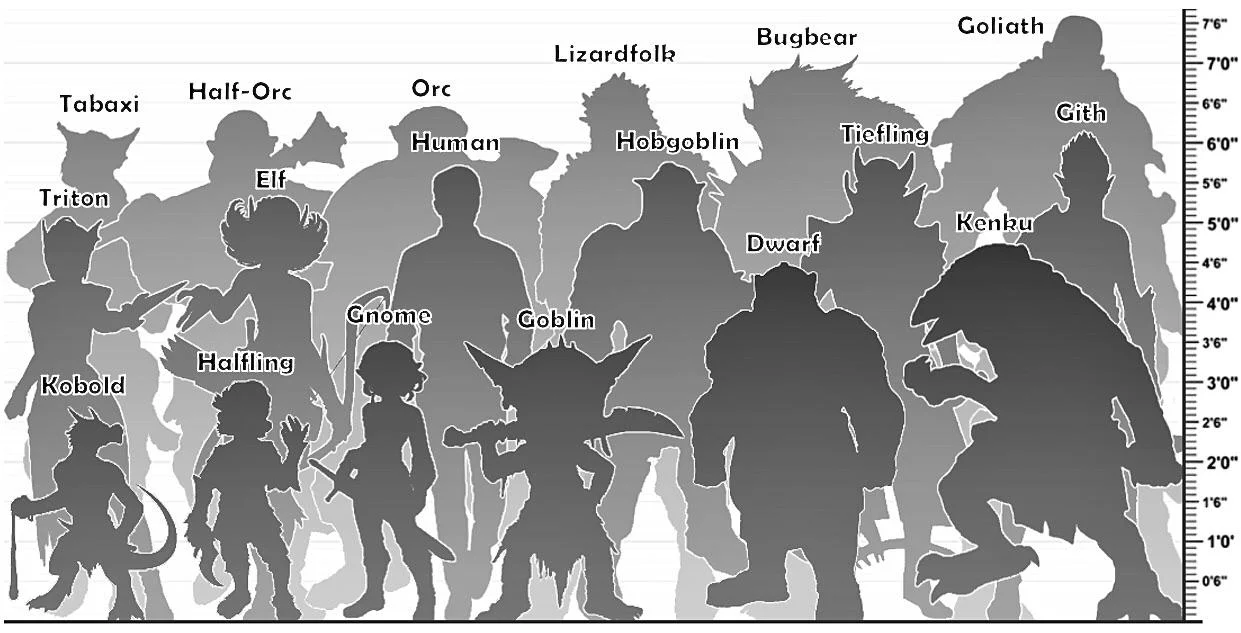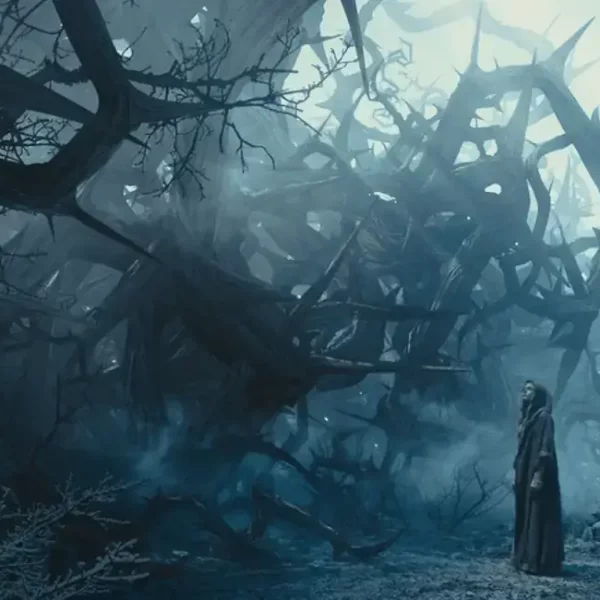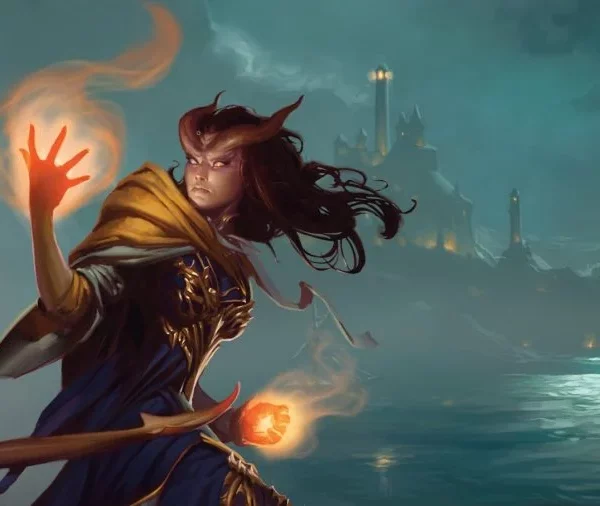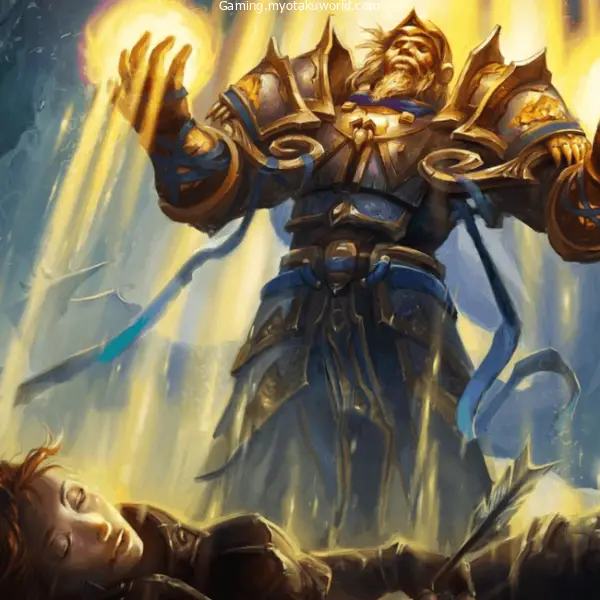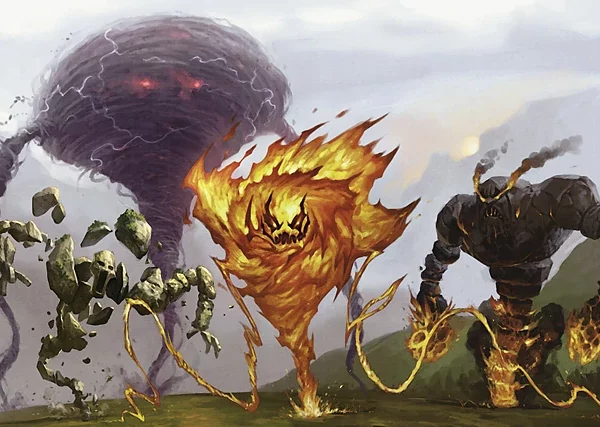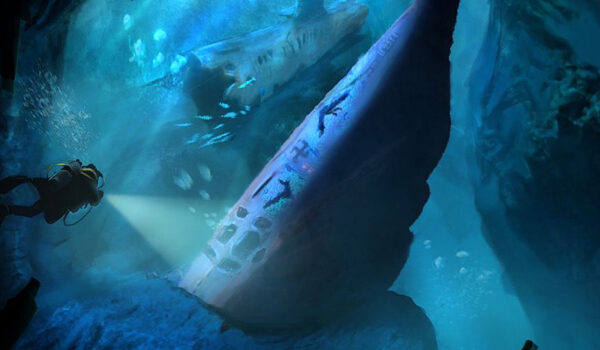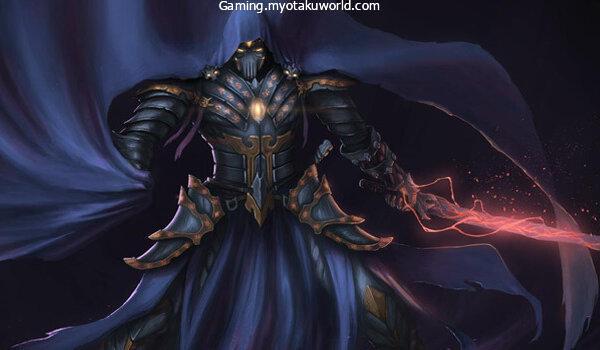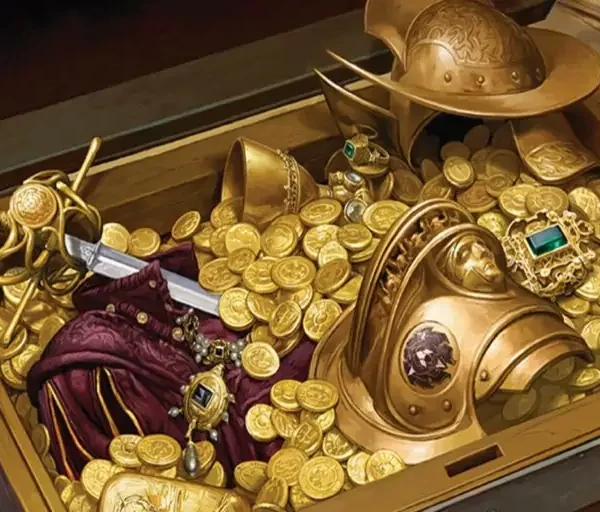In Dungeons & Dragons 5th Edition, there are all kinds of strange creatures of different sizes and shapes and the size of a creature is often a factor.
But, how does size in D&D work? Where does a certain creature fit in terms of its size?
How does it change the way you play?
If you are new to D&D 5e, this article tells you everything you need to know about D&D 5e Size Chart & guide are explained in this article.
First, let’s go over what size means in D&D.
- D&D Sizes Explained
- D&D Size Chart
- Size & Height
- Colossal Size in 5e
- D&D Sizes & Tile Counts
- Blocking Enemy Movement
- Size & Squeezing in 5e
- Size, Lifting, Dragging, & Pulling
- Size & Grappling
- Determining the Sizes of Objects in 5e
- How do Race Sizes Affect Gameplay for Players?
- Using Size to the Game Master’s Advantage
- FAQs
D&D Sizes Explained
Size in D&D 5e is a way to describe how much room a creature or object takes up. It tells you how to play the game, like how to lift and pull, but it’s mostly used to say how many tiles something takes up on a battle map.
In D&D, the size of a creature is a good way to describe how much space it takes up in a fight. But it can be used outside of battle to figure out if a creature can enter a space.
Also, as I’ll explain in a bit, size plays a role in how carrying works in D&D 5e. Obviously, to show that larger animals can carry more weight than smaller ones.
So, in D&D, the size tells you the following:
- How much space does a creature actually uses
- The smallest hole an animal can fit through
- How much a creature can pull, push, or lift?
Page 191 of the Player’s Handbook says that a creature’s size is basically how much space it controls during combat. It also talks about what space means in terms of battle.
A creature’s space is the area in feet that it effectively controls in combat, not an expression of its physical dimensions. A typical Medium creature isn’t 5 feet wide, for example, but it does control a space that wide…
A creature’s space also reflects the area it needs to fight effectively. For that reason, there’s a limit to the number of creatures that can surround another creature in combat.
So, in D&D, a creature’s size has to do with how much space it controls on the battlefield, not its actual size.
But I’d like to add that size has uses outside of battle for the same reasons I’ve already given. During the battle, it’s not just about how many feet a creature controls.
Now that that’s out of the way, D&D 5e has six sizes that are easy to look up and help both GMs and players understand how the game works.
D&D Size Chart
In D&D 5e, creatures and objects can be Tiny, Small, Medium, Large, Huge, or Gargantuan.
Each category tells how many squares or hexes something takes up on a battle map and gives players and Game Masters a way to figure out how big something is.
Use the D&D Size Chart below to figure out how much space each creature needs.
| D&D Sizes | |||
|---|---|---|---|
| Size | Space | Squares | Hexes |
| Tiny | 2 1/2 x 2 1/2 ft. | 1/4 x 1/4 of an sq. | 1/4 x 1/4 of a hex |
| Small | 5 x 5 ft. | 1 sq. | 1 hex |
| Medium | 5 x 5 ft. | 1 sq. | 1 hex |
| Large | 10 x 10 ft. | 4 sq. (2 x 2) | 3 hexes |
| Huge | 15 x 15 ft. | 9 sq. (3 x 3) | 7 hexes |
| Gargantuan | 20+ x 20+ ft. | 16+ sq. (4+ x 4+) | 12+ hexes |
Creature Size Examples
Example Tiny Creatures
Badger, Flameskull, Imp, Owl, Sprite
Example Small Creatures
Cockatrice, Dretch, Goblin, Mephits, Halfling player race
Example Medium Creatures
Azer, Bearded Devil, Harpy, Mummy, most player races
Example Large Creatures
Aboleth, Dire Wolf, Ogre, Polar Bear, Young Dragons
Example Huge Creatures
Adult Dragons, Elephant, Giants, Treant, Tyrannosaurus Rex
Example Gargantuan Creatures
Ancient Dragons, Kraken, Purple Worm, Roc, Tarrasque
Here’s a size comparison between a Tyrannosaurus Rex and a person:

So, Adult Dragons, Giants, and other Huge-sized creatures are pretty much the same size. Gargantuan-size creatures are even bigger than that.
Size & Height
In D&D 5e, a creature’s size isn’t always the same as its height. There are some hints, but it’s not clear how to figure out how tall a creature is based on how big it is.
In D&D 5e, there is no direct link between size and height. At least, it’s not always the case. In 5e, a Draft Horse is an example of a Large creature.
They are long, but most of the time they are only about six and a half feet tall. On the other hand, an Ogre, which is also a Large creature, is between 9 and 10 feet tall.
As you can see, in 5e, a creature’s height doesn’t always tell you how big it is. But we can figure out some rough height ranges based on the rest of the story.
Goliaths, for example, are said to be able to grow up to eight feet tall, but they are still counted as Medium creatures.
As we’ve already said, the Ogre starts at about nine feet. Now, Half-Ogres are also Large in size, but their height starts at about eight feet.
So, a Medium-sized creature’s range in D&D 5e seems to end around the 8-foot mark.
The Hill Giant, on the other hand, is the shortest of the Giants in 5e. He is about 16 feet tall. As you can see above, another Huge creature, the Tyrannosaurus Rex, is about 15 feet (5 metres) tall.
Even though a T-Rex is much longer than a Hill Giant, they are about the same height. So, we can see that the marker for Huge creatures starts around 15 to 16 feet tall.
All of this said players can only make rough guesses based on the few hints they get from the Monster Manual and other sourcebooks. So, all of this is pretty subjective.
Heights by Creature Size
- Tiny: shorter than 2 feet
- Small: between 2 & 4 feet
- Medium: between 4 & 8 feet
- Large: between 8 & 15 feet
- Huge: between 15 & 30 feet
- Gargantuan: taller than 30 feet
Again, keep in mind that these are just rough estimates and not exact heights for each D&D size.
Colossal Size in 5e
Colossal was a size category in older versions of Dungeons & Dragons, but it was left out of the 5th Edition. In 5e, creatures that were in the Colossal size category were also in the Gargantuan size category.
The Colossal size used to be for creatures that were either taller or longer than 64 feet. But for some reason, this size category wasn’t part of 5e. Instead, it was put in the “Giant” size group.
These animals still exist, but they don’t belong to a different size group.
D&D Sizes & Tile Counts
The number of squares or hexes a creature takes up on a battle map may be the most important thing to know about its size.
I already put in the table above how many tiles a creature takes up based on its size. But, if you boil it down, it looks like this:
- Tiny: 1/4 square or hex
- Small: 1 square or hex
- Medium: 1 square or hex
- Large: 4 squares (2 x 2) or 3 hexes
- Huge: 9 squares (3 x 3) or 7 hexes
- Gargantuan: 16+ squares (4+ x 4+) or 12+ hexes
Keep in mind that Gargantuan-sized creatures may be even bigger than they look. This just shows how much space Gargantuan creatures take up on average.
Blocking Enemy Movement
In D&D, a creature’s size can affect how it moves around on the battlefield.
A creature can move through the space of any other friendly creature, but it can only move through the space of an enemy creature if it is two sizes smaller or bigger than it.
The PHB says on page 191:
…you can move through a hostile creature’s space only if the creature is at least two sizes larger or smaller than you.
Here’s a rundown of how this rule affects each of D&D’s size categories:
- Tiny: Medium & larger
- Small: Large & larger
- Medium: Tiny, Huge, & Gargantuan
- Large: Tiny, Small, & Gargantuan
- Huge: Medium & smaller
- Gargantuan: Large & smaller
Now, this only applies to creatures that want to hurt you. No matter how big they are, creatures can move through the space of a non-hostile creature.
Also, keep in mind that moving through the space of any creature is hard terrain.
So, a simple way for player characters or monsters to stop an enemy from moving is to use their size.
Maybe an ogre stands in the way of the only way out of a cave while goblins shoot arrows from holes in the walls.
Or, maybe the Paladin holds off an enemy in a narrow hallway so that the rest of the party can escape.
The idea is that the bigger a creature is, the easier it is to stop an enemy from moving because of how big it is.
Size & Squeezing in 5e
In 5e, a creature can squeeze through a space that is one size category smaller than it. When 5e is crammed into a small space, movement speed and attack rolls suffer.
Right out of the PHB, page 192:
A creature can squeeze through a space that is large enough for a creature one size smaller than it…While squeezing through a space, a creature must spend 1 extra foot for every foot it moves there, and it has disadvantage on attack rolls and Dexterity saving throws. Attack rolls against the creature have advantage while it’s in the smaller space.
A creature can only squeeze through a space that is one size smaller than it. It takes 10 feet of movement for every 5 feet (one square or hex) moved while squeezing, and the creature has a disadvantage on attacks and Dexterity saves.
- Tiny: GM’s discretion
- Small: Tiny space
- Medium: Small space
- Large: Medium space
- Huge: Large space
- Gargantuan: Huge space
In theory, all of these are up to the Game Master to decide. For example, a Cat and a Frog are both small animals.
Now, cats can get through some pretty small holes, but a frog can probably get through even smaller ones.
In the same way, the Tarrasque is a monster with so much space that it can’t be stopped, and it is the same size as the Purple Worm.
Now, these are made-up creatures whose sizes are hard to figure out. But I think a really big worm would have an easier time getting through a Huge space than a knockoff Godzilla with a spine-armoured shell.
But that could just be me. It would also depend on the GM at your table.
Size, Lifting, Dragging, & Pulling
The size of a creature also affects how much weight it can carry, drag, lift, and push. Bigger animals can carry more weight than those that are smaller.
On page 176 of the PHB, there is a section called “Lifting and Carrying” with rules for pushing, dragging, and lifting creatures and objects.
Carrying Capacity: That you can carry, which is high enough that most characters don’t usually have to worry about it.
Push, Drag, or Lift: You can push, drag, or lift a weight in pounds up to twice your carrying capacity (or 30 times your Strength score). While pushing or dragging weight over your carrying capacity, your speed drops to 5 feet.
Size and Strength: Larger creatures can bear more weight, whereas Tiny creatures can carry less. For each size category above Medium, double the creature’s carrying capacity and the amount it can push, drag, or lift. For a Tiny creature, halve these weights.
What does this mean, though?
Well, it means that Small and Medium creatures can carry 15 times their Strength score (lbs). For the sake of simplicity, let’s write that as a formula:
Carrying Capacity in 5e = Strength Score x 15
But these animals can push, pull, or lift twice as much as they can carry. The amount a Small or Medium creature can push, pull, or lift is equal to their Strength score multiplied by 30.
Still, there are some different sizes thrown into the mix.
For each category above Medium, creatures that are Large or bigger double their total weight.
Here is a table that shows how to figure out how much weight each size category can carry and how much weight it can push, pull, or lift.
| D&D Sizes, Lifting, & Carrying | ||
|---|---|---|
| Size | Carrying Capacity (in lbs) | Push, Drag, Lift (in lbs) |
| Tiny | STR x 7 1/2 | STR X 15 |
| Small | STR x 15 | STR x 30 |
| Medium | STR x 15 | STR x 30 |
| Large | STR x 30 | STR x 60 |
| Huge | STR x 60 | STR x 120 |
| Gargantuan | STR x 120 | STR x 240 |
So, the bigger a creature is, the more it can lift, and the more it can lift, the bigger it gets.
Size & Grappling
In D&D 5e, grappling has size limits. A creature can only try to grapple another creature that is no more than one size category bigger than it.
In 5e, grappling means trying to get a hold of another creature. This has some benefits, like stopping the creature you’re holding from moving at all. And it’s a good strategy for martial player characters to use in general.
Having said that, there is a size limit.
If another creature is two sizes bigger than it, it can’t grapple it. So, a Medium creature can’t try to grab a Huge creature, and a Tiny creature can’t grab a Medium creature, and so on.
Page 195 of the PHB makes this clear:
The target of your grapple must be no more than one size larger than you….
Simple as that.
For reference, here’s how each of D&D’s size categories compares to other sizes they might try to fight:
- Tiny may grapple Tiny & Small
- Small may grapple Tiny, Small, & Medium
- The medium may grapple Tiny, Small, Medium, & Large
- Large may grapple Tiny, Small, Medium, Large, & Huge
- Huge may grapple all Sizes
- Gargantuan may grapple all Sizes
Now, if you’re a Game Master, you should think about how big a Gargantuan creature is, not just how big it is in its size category.
Technically, a Hill Giant could try to wrestle with a Tarrasque. But there is a real difference in size there that you should think about.
Determining the Sizes of Objects in 5e
Most of the time, you can tell how big something is by how many tiles it takes up. If you want to figure out how big something is, a good place to start is with D&D’s size categories.
Game Masters can use the size categories to figure out how big something is. A table that is 10 feet long and 8 feet wide is a Large object, while a wooden water barrel is a Medium object, and so on.
You can also get a sense of object sizes by comparing them to some of the creatures, especially some of the ones in the Constructs monster type.
For example, Animated Armor is a Medium-sized monster, a Flying Sword is Small, and a Rug of Smothering is Large. Each of these is just a moving object with a set size.
On page 247 of the Dungeon Master’s Guide, there are some examples of how to figure out how many hit points an object has based on its size.
This section is mostly about the hit points, but it also shows examples of objects that fit into certain size categories.
- Tiny (bottle, lock)
- Small (chest, lute)
- Medium (barrel, chandelier)
- Large (Cart, 10-ft.-by-10-ft. window)
…Huge and Gargantuan objects, such as a colossal statue, a towering column of stone, or a massive boulder….
This gives you an idea of how big or small things are in D&D 5e.
At the end of the day, it’s up to the GM to decide how big something is in D&D. But the size categories make it easy to get a general idea.
How do Race Sizes Affect Gameplay for Players?
In 5e, all of the playable races are either Small or Medium in size. In 5e, Medium-sized player characters don’t have any disadvantages, and some of them even have traits that go beyond Medium. However, Small-sized ones can’t use certain weapons.
In D&D 5e, all player races use either the Small or the Medium size. Now, there are a few choices that change the normal size rules for how much weight a character can push, pull, or lift. But they never change how big a character is.
First of all, most of the playable races in 5e are Medium-sized creatures. When it comes to how many squares or hexes they take up, how much they can carry, and how much weight they can push, pull, or lift, these creatures follow the usual rules.
Some playable races are small. This means that they follow most of the other rules, but there is an extra rule about some weapons.
On page 147 of the PHB, it says that some 5e weapons have the Heavy property, which means:
Heavy. Creatures that are Small or Tiny have disadvantage on attack rolls with heavy weapons. A heavy weapon’s size and bulk make it too large for a Small or Tiny creature to use effectively.
So, player characters with the Small property are at a disadvantage when they attack with weapons that have Heavy properties. Not only player characters but all Small creatures are affected by this.
Many, but not all, races for small characters also slow them down to 25 feet per second. This is usually for older options like Halfling since the newer Small races like Goblin move at 30 feet per turn.
Aside from that, players follow the same rules as usual for Small-sized characters.
Now, there are a few player races that are different, like the Goliath, which has the trait “Powerful Build.”
This trait means that player characters of these races use the Large size rules for carrying, pushing, pulling, and lifting.
So, instead of using STR x 15 or STR x 30 to figure out how much they can carry or how much weight they can push, pull, or lift, these player races would use STR x 30 or STR x 60.
Small-Size Playable Races & Lineages
- Halfling (PHB)
- Gnome (PHB)
- Fairy (WBtW)
- Harengon (WBtW)
- Owlin (SACoC)
- Goblin (VGtM, GGtR)
- Kobold (VGtM)
- Grung (OGA)
- Verdan* (AcInc)
- Dhampir (VRGtR)
- Hexblood (VRGtR)
- Reborn (VRGtR)
Medium-Size Playable Races & Lineage
- Dwarf (PHB)
- Elf (PHB)
- Human (PHB)
- Dragonborn (PHB)
- Half-Elf (PHB)
- Half-Orc (PHB)
- Tiefling (PHB, SCAG)
- Aarakocra (EE)
- Genasi (EE)
- Goliath (EE, VGtM)
- Aasimar (VGtM)
- Firbolg (VGtM)
- Kenku (VGtM)
- Lizardfolk (VGtM)
- Tabaxi (VGtM)
- Triton (VGtM)
- Bugbear (VGtM)
- Hobgoblin (VGtM)
- Orc (VGtM, EGtW, E:RftLW)
- Yuan-ti (VGtM)
- Gith (MToF)
- Centaur (GGtR)
- Loxodon (GGtR)
- Minotaur (GGtR)
- Simic Hybrid (GGtR)
- Vedalken (GGtR)
- Changeling (E: RftLW)
- Kalashtar (E: RftLW)
- Shifter (E: RftLW)
- Warforged (E: RftLW)
- Leonin (MOoT)
- Satyr (MOoT)
- Fairy (WBtW)
- Harengon (WBtW)
- Owlin (SACoC)
- Tortle (TTP)
- Verdan* (AcInc)
- Locathah (LR)
- Dhampir (VRGtR)
- Hexblood (VRGtR)
- Reborn (VRGtR)
Character Races with Powerful Build
- Firbolg (VGtM)
- Goliath (EE, VGtM)
- Bugbear (VGtM)
- Orc (VGtM, EGtW, E:RftLW)
- Loxodon (GGtR)
*Verdan are only small for the first few levels of their careers.
Check out my list of abbreviations for D&D 5e sourcebooks if you don’t know what they mean.
Using Size to the Game Master’s Advantage
As a Game Master, using a creature’s size to your advantage is a great way to make fights more interesting. It also works well to add tension to your encounters because it lets the players know how big each creature is.
The best thing about being a 5e GM is having access to a wide range of monsters and creature types.
This lets them use any number of creatures of many different sizes for any adventure or fight. To change the size, player characters need to use magic items, but the GM can use any monster they want.
GMs can fill as much or as little space as they want when they use a creature’s size against their players.
The bigger creatures take up more space, which could make it hard for the player characters to get away or move.
On the other hand, a GM could send a swarm of Tiny creatures after the player characters as they squeeze through a small space.
Game masters can use size to their advantage much more than player characters can.
For example, a Giant might stand in the way of the only way out of a cave while it falls apart. Then, the players have to figure out how to get around the tall creature without getting hit by falling rocks.
Or, a group of people are attacked by a group of sprites as they squeeze through the narrow passages of a city’s sewer system.
Aside from being able to fill or fit into any space, it’s also easier for bigger creatures to grab onto smaller ones.
Also, and this was already said, there is a size limit for grappling. The size of creatures that player characters can try to grab without the help of magic is pretty limited.
But GMs can use creatures of any size, which means that the big ones can grab the weak player characters and throw them against a wall at will.
It’s not always about stopping people from moving and closing off escape routes. As a Game Master in D&D, using size means taking advantage of the creatures’ natural advantages.
FAQs
Do Small Creatures Get +1 AC?
No, in D&D 5e, small creatures don’t get an extra +1 to their Armor Class. There is nothing in the rules that says small creatures get a +1 to AC. Straightforward.
Can a Tiny Creature Ride a Tiny Creature?
No, not really. In D&D 5e, a Tiny creature can’t right another Tiny creature.The Mounted Combat rules for 5e say that amount can be “any willing creature that is at least one size larger than you.” Bold to make a point. So, a Tiny-sized creature can’t use another Tiny-sized creature as a mount, since they are both Tiny.
How Big is a Dragon?
Dragons in 5e range in size from Medium to Gargantuan based on how old they are. No matter what colour they are, the youngest dragons start as medium-sized creatures.
Ancient Dragons, on the other hand, are very old and very big.
Dragon Wyrmling: Medium
Young Dragon: Large
Adult Dragon: Huge
Ancient Dragon: Gargantuan
That’s all you need to know about how the size works in D&D.
Size breaks things down into six groups for quick reference and game mechanics.
It changes a lot of how D&D 5e works, from how much you can carry to how much square or hex space you have to what creatures you can try to grapple with.
Size is a great way for Game Masters to spice up their fights and for players to keep in mind when they’re exploring the world.
